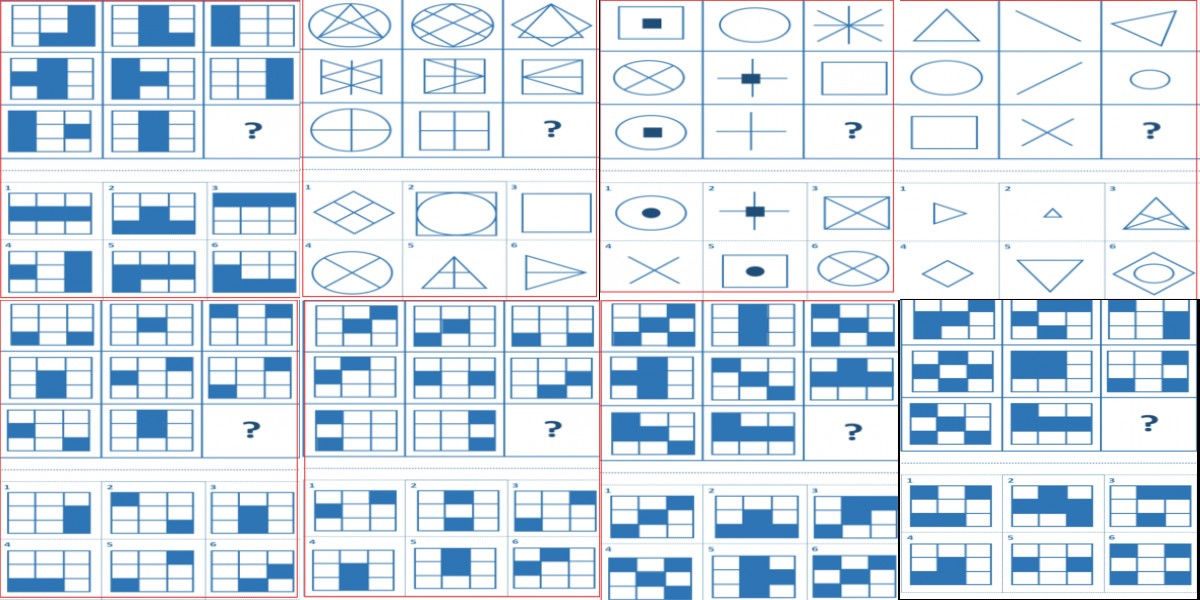Top Row
First Question
I think the answer is 4. In each row, consider the vertical bar of three blue squares moving horizontally in one direction and the single blue square moving in the opposite direction (also it's the only image with three vertical blue squares, like the others)
Second Question
Number 2. In each row, the third image is the XOR of the other two.
Third Question
Number 3. In each row if we combine all the images, we get the same total image.
Fourth Question
Number 4. In each row, the third image is the first image either rotated or diminished (dependent on the second image), in the last row it's both.
Bottom Row
First Question
Number 2. In each row, imagine one of the squares moving diagonally up and to the left and the other up and to the right (where the image wraps around like a torus)
Second Question (three possible answers, both provided in the comments)
Prince DeepThinker: Number 3. In each row, if you overlap the three images, you obtain an image which has exactly four blue squares which, if you colour the underlying grid like a chessboard, are all on white squares or all on black squares.
Matias Stachowski: Number 5. Both tiles move down and to the left with the exception of when they meet the left edge where they also move one square up (effectively just move left if they are at the left edge and the image wraps around).
SpiritFryer has given a perhaps cleaner explanation of the same idea. That is, in each row, "each square moves 2 slots forward (wrapping to the start of the next row)"
Third Question (three possible answers with sensible reasoning)
Number 3. In each row, the third image is just the first image rotated 90 degrees clockwise.
PrinceDeepthinker: Number 1. Each row has one image with three blue squares and two images with four blue squares.
Matias Stachowski has given a nice visualisation of each row: Each row has a turning line and an independent dot. The lines turn 45 degrees counter clockwise, and the individual dot has a pattern following the lines. The conclusion is that the answer could be 1,3 or 6 depending on how one visualises it. I see this leading to 3 but Matias has given convincing reasoning how one could also conclude 6 as the answer.
Fourth Question (solved by PrinceDeepthinker)
Number 3. In each row, the third image represents the squares which have not been coloured in the first two images.

